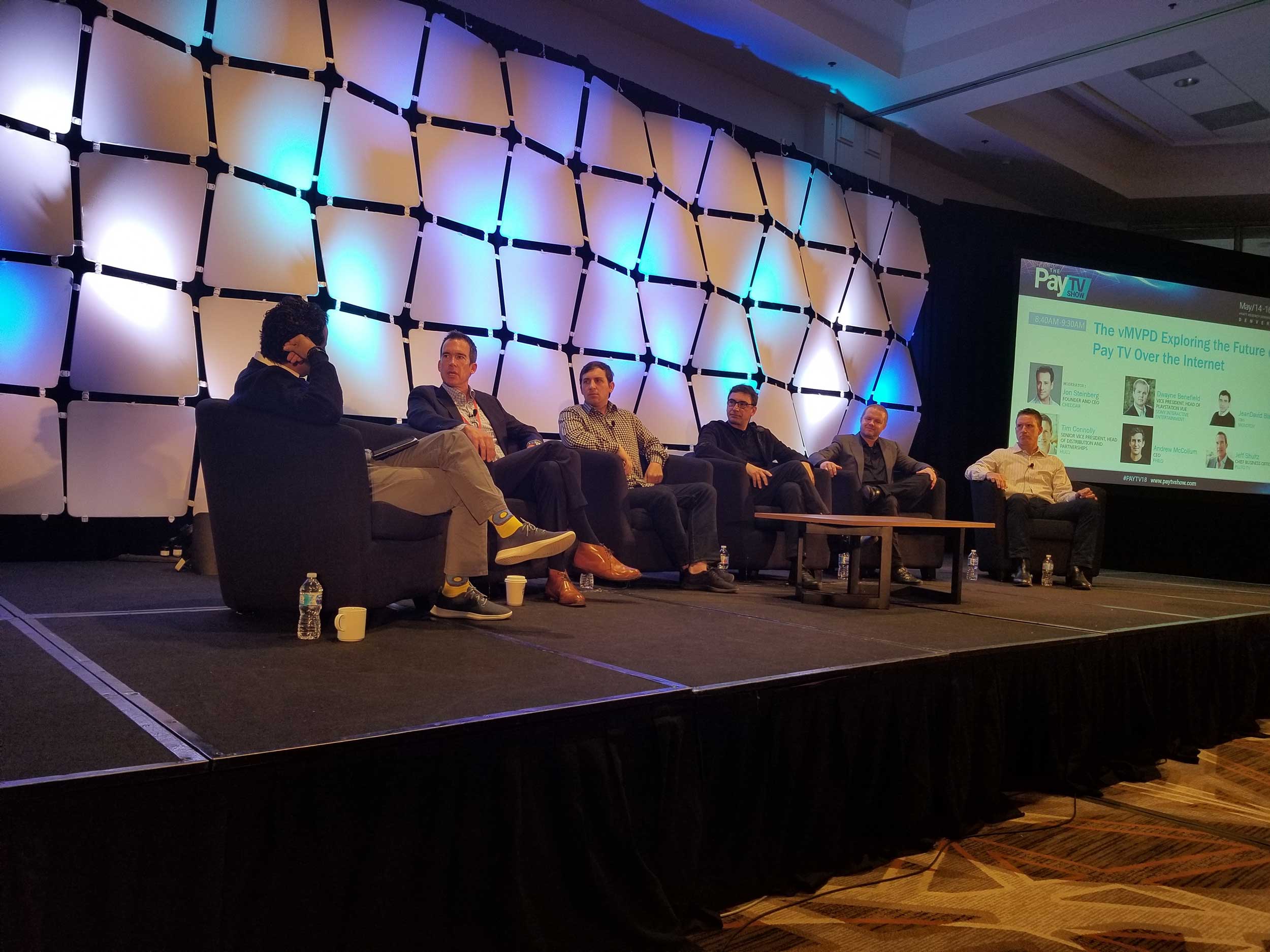Improved Experience Can Aid What Ails Pay TV: Panel

WHY THIS MATTERS: Questions of the right distribution model and experience remain essential among newer pay TV providers.
The pay TV industry continues to get hit with subscriber losses. But a new array of virtual multichannel video programming distributors believes that the ability to provide more agile and intuitive experiences on a wide range of streaming platforms can serve as a major difference maker.
That was one big takeaway from a May 16 panel at the Pay TV Show in Denver, focused on the emerging mix of virtual MVPDs that are pushing ahead with a variety of video packages that are delivered using slick, personalized interfaces. The event was hosted by Fierce and parent company Questex.
Session moderator Jon Steinberg, founder and CEO of Cheddar, the business and tech news service tailored for younger audiences, asked why traditional TV is in trouble, and ran through a list of TV shows and series that tend to appeal to an older set of consumers.
Tim Connolly, senior VP and head of distribution and partnerships at Hulu, said that many of those shows are also popular on Hulu, whose average subscriber is 31 years old.
“It really is more about the platform and not the show itself,” Connolly said, adding later that a case study found that shows such as The Good Wife have done a decent job finding an audience of young women on the streaming service.
PlayStation Vue, the Sony-owned OTT TV service, serves an audience that’s mostly in its early 30s.
Broadcasting & Cable Newsletter
The smarter way to stay on top of broadcasting and cable industry. Sign up below
“The reason we built PlayStation Vue was because the PlayStation audience is largely millennial and wanted a better way to watch TV,” Dwayne Benefield, vice president and head of Sony PlayStation Vue, said.
To keep TV relevant, service providers need to create a better product experience, agreed Philo CEO Andrew McCollum, whose company launched a national, entertainment-focused package last November that starts at $16 per month.
Philo cut its teeth on a multiplatform TV model tailored for college campuses, and found that 92% of those college users said they’d want to keep the service after they graduated. Philo has parlayed those learnings and experiences into its new national OTT TV product. “The content really isn’t the problem,” McCollum said. “It’s the cost and the delivery.”
Experiences Matter
Consumer cost isn’t an issue for Pluto TV, the free, ad-supported linear-style TV service.
Traditional TV didn’t keep up with consumer expectations, Jeff Shultz, chief business officer of Pluto TV, said. He argued that while the customer experience continues to be an issue, the challenges affecting the overarching business model remains a more significant hurdle for the pay TV industry to overcome.
“We’ve learned that ‘free’ and ‘instant’ scales in a way that’s remarkable,” he said.
But Cheddar’s Steinberg wondered if MVPDs, virtual or traditional, have a “tortured relationship” with Pluto TV, given that networks and programmers, including Cheddar, offer some content on the free streaming service as well as through pay TV distributors, creating a challenge to provide enough value across the board. Why not create a “front porch” that gives consumers access to that free content alongside an avenue to the paid product?
Shultz said Pluto TV is starting to do that, citing some work with subscription video-on-demand service DramaFever, whereby season one of a multi-season series from DramaFever appears on Pluto TV’s free, ad-supported service while also giving viewers a clear path to DramaFever’s full SVOD offering.
Others see the path to success being paved by a mix of both free and paid.
France-based Molotov runs a freemium-style service that offers some free content with an upsell option. Company CEO Jean-David Blanc said Molotov’s simplified approach has enabled them to draw consumers of all ages.
“Everything is about the experience,” Blanc said.
